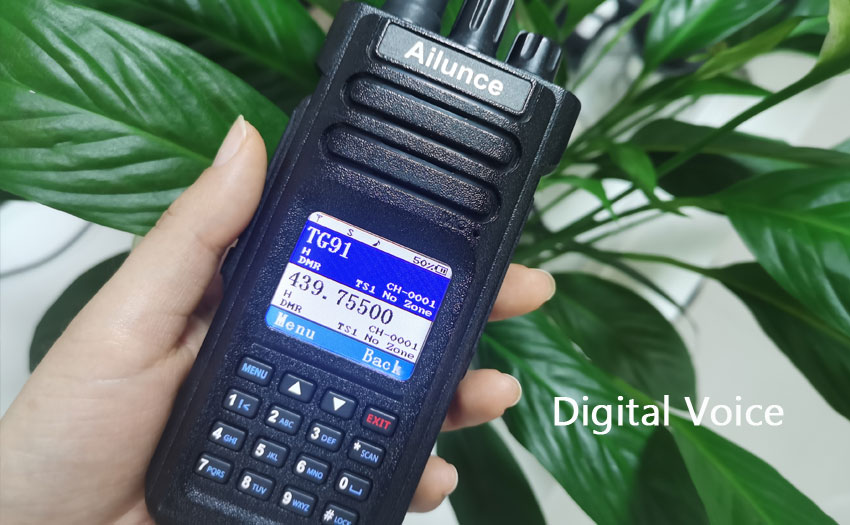+86 15093323284 hams@ailunce.com
Comparison of Amateur Radio Digital Voice Modes

Understanding the different modes of digital voice can enable amateurs to clearly understand the bandwidth and transmission rate used by the digital voice mode. It can also help us understand which mode is easier to get started and which mode should be experienced in the future.
There are three digital voice modes, namely C4FM Fusion, D-Star, and DMR.
Before starting to compare these three modes, let's take a quick look at "digital voice".
Digital Voice Overview
Digital voice is a converted version of digital data that we can hear. By using an A/D converter, digital data is converted into digital voice and then processed by a vocoder. The vocoder analyzes and synthesizes the speech signal and compresses it to make transmission easier and faster. The transmitted data is divided into two parts. The first part is called the title, and the second part is called the "data part". The header carries routing information and information used to identify the user's identity. On the other hand, the second part called the "data part" contains text, pictures, and other detailed information.
Technical specifications comparison
Vocoder
C4FM Fusion uses AMBE+2, DMR uses AMBE+2 and D-Star uses AMBE+.
Wrong forward
All three digital voice modes use the "voice only" forward error correction method.
Modulation
Fusion uses C4FM (continuous 4-level frequency modulation), DMR uses 4FSK (4-level frequency shift keying), and D-Star uses GMSK (Gaussian minimum frequency shift keying).
DMR uses TDMA (Time Division Multiple Access), and the other two use FDMA (Frequency Division Multiple Access)
Transmission rate
The transmission rate of Fusion is 9.6Kbps, the transmission rate of DMR is 4.8Kbps x2, and the transmission rate of D-Star is 4.8Kbps.
Bandwidth
The bandwidth utilization rate of Fusion and DMR is 12.5Khz, while the bandwidth utilization rate of D-Star is 6.25Khz.
How to identify users
Different modes may have similar or different methods to identify users.
User registration requirements
D-Star and DMR require user registration, but for Fusion users, user registration is optional.
User authentication
D-Star and Fusion identify users through call signs, and DMR identifies users through user IDs.
How to connect the repeater
The selectivity of repeaters can be compared based on the following factors:
Local connection: All three voice modes support local connection.
Connect to another repeater: Only D-Star supports connection with other repeaters.
Multi-repeater connection: D-Star supports reflector multi-repeater connection, DMR supports talk group, and C4FM Fusion supports Wires-X Room.
Operating characteristics
Every ham wants easy access to the amateur radio and digital voice modes, but the degree of convenience may vary depending on the type of choice or the availability of the radio. The existence of more functions may make it difficult to operate amateur radio. However, with the passage of time, the professional level of ham has also continued to improve, which makes it easier to use any radio and digital voice mode.











